Spring Herb Guide
This article was originally published in April 2012

Dainty and light as a feather are the herbs of springtime, those first tender tendrils that lend our cooking the unmistakable flavor and fragrance of freshness and green. Add them near the end of cooking for optimum color and flavor.
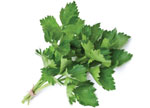
Chervil is similar to parsley but with a slight anise-like flavor. Popular in France, it’s delicate and best used fresh, added at the last moment. Garnish salads with it, use in dressings or add to omelets.
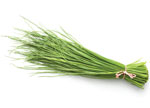
Chives offer a mild, herbal onion flavor that’s delicious with potatoes, asparagus, leeks, seafood; added to butter and in cream sauces. The thinner and brighter green the chive, the more delicate the flavor.
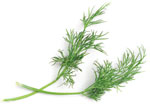
Dill offers a flavor between anise, parsley and celery and pairs well with cheese, seafood, chicken soup, chilled salads and vegetable casseroles. It’s a frequent player in Greek, Italian, Turkish, Russian and Scandinavian cuisine. Look for young, brightly colored, feathery leaves.
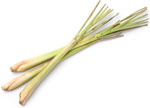
Lemongrass has a citrus flavor that provides a brightness in Asian and Caribbean cuisine. Cut into 1-inch pieces and smash before incorporating into soups and simmered dishes. For salads, slice into thin rounds.
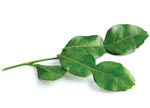
Lime leaf is to Thai cooking what a bay leaf is to Western cooking. This fragrant herb also can be added to curry and pastes — using scissors snip the leaves into small pieces before incorporating into your dish. Lime leaves can be kept in the freezer for up to a year and don’t require thawing before use.
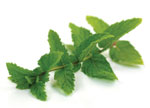
Mint is used widely in the cuisines of the Middle East and Southeast Asia, where its cooling influence complements aromatic spices on grilled meats, grain salads and steaming bowls of pho and other soups. Mint is lovely with lamb, lends sophistication to fruit salad and is refreshing in a mojito or other cocktail.
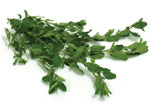
Marjoram is a sweeter, milder cousin of oregano that’s well-suited to starchy vegetables and often blended with sage for poultry seasoning or with thyme to season sausage. It’s wonderful with fried potatoes, clam chowder, black beans, broccoli, tomatoes, chicken and duck.
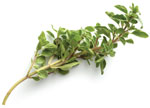
Oregano, Greek for “mountain joy,” has a warm, aromatic scent and robust taste. Widely used in Mediterranean and Mexican cuisines, it’s great for seasoning soups, stews and pasta sauces. Try sprinkling it over pizza or add to shellfish.
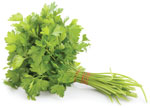
Parsley, whether flat-leaf (Italian) or curly, is among the most universally used culinary herbs. Italian parsley is the basis of iconic green sauces such as Argentina’s chimichurri, delicious atop grilled meats. Parsley works well in stuffings, in whole grain salads, with eggplant and in many other dishes.
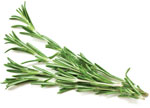
Rosemary is a member of the mint family, native to the Mediterranean. Its aromatic, piney flavor is a great fit for lamb, meat stews and marinades, but it also can add life to lighter fish and poultry dishes, as well as vegetables.
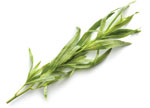
Tarragon, with its aromatic, anise-like flavor, marries well with chicken, egg and mushroom dishes and is a mainstay in classic French cuisine. Its sprigs are often used to flavor white wine vinegar.
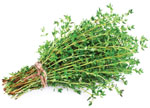
Thyme lends a powerful fragrance and subtle lemon, minty taste to dishes. Common in French cuisine, it’s included in bouquet garni and used to season soups and sauces. Thyme pairs well with poultry, fish and lamb, and is great in egg dishes.
Quick tips
To wash herbs, hold by stems and rinse vigorously under cool water until free of dirt. Spin dry in a salad spinner or blot dry with paper towels or a dish cloth. The drier the herbs, the better they’ll tolerate cutting and chopping.
Cut herbs with a sharp knife or scissors to avoid bruising. You also can tear leafy herbs to release more flavor during cooking.
Store herbs in the crisper section of the refrigerator, wrapped in a paper towel and tucked inside an airtight container.
Leftover herbs such as basil, arugula, Thai basil and mint make great pesto. Freeze pesto in ice cube trays, then transfer to an airtight container.
Make your own herb-infused butter: Blend 1/2 cup unsalted, softened butter or margarine with 1 tablespoon finely chopped fresh herbs of your choice. Roll butter into a log and freeze in waxed paper.
Grow herbs from seed
While purchasing packaged herbs can get expensive, growing your own fresh herbs only requires a pack of seeds or a plant start and a little care and attention.
You can begin with small pots indoors to get your seeds started, and then as the weather warms and your plants grow, transfer them to larger pots outdoors. Choose a sunny spot for the pots, and be sure to water them on a regular basis.
The best time to harvest herbs is in the morning, after the dew has evaporated but before the sun has warmed them. Pick just the amount you need for that day. Keep them in the refrigerator in a produce bag until ready to use. Herbs should appear fresh, with no leaf discoloration.
Look for herb seeds from Seeds of Change and Uprising Seeds and plant starts from Rents Due Ranch at your neighborhood PCC.
Revised April 2018
